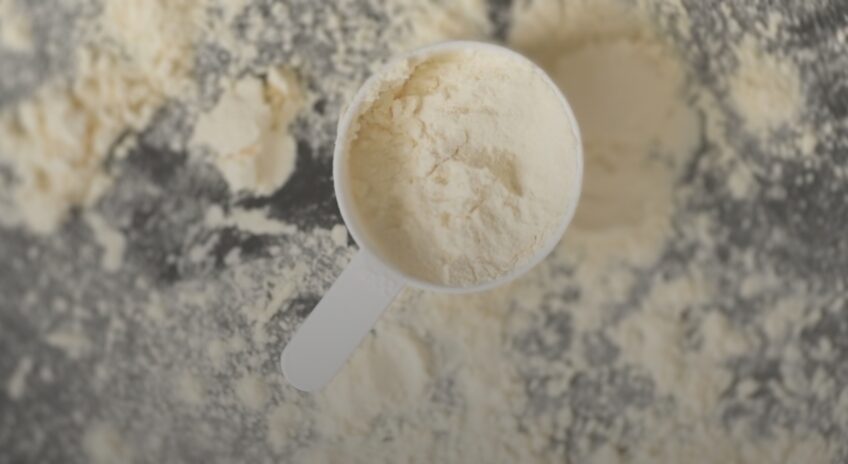Creatine, a supplement treasured by many fitness enthusiasts and professional athletes, has long been associated with strength, performance, and muscle gains. In this comprehensive guide, we will delve into the specifics of creatine usage – more precisely, how much to take before and after your workout.
What Creatine Does

Creatine is a naturally occurring amino acid found primarily in your muscle cells. It is involved in the production of energy during high-intensity exercise. It’s one of the most extensively studied sports supplements and is found to be both safe and effective.
It is synthesized in the body from the amino acids glycine, arginine, and methionine. This synthesis occurs mainly in the liver and kidneys. Your body naturally produces about 1 gram of creatine per day, and you get an additional dose from a diet rich in protein, such as red meat and fish. Although it is not essential in the diet, it plays a crucial role in physical performance and muscle health.
Its Benefits
The benefits of creatine are not limited to increasing athletic performance. Some other significant benefits include:
- Enhanced muscle cell recovery post high-intensity workouts
- Support of cognitive functions
- Reduction in symptoms of certain neuromuscular disorders
Dosage Guidelines
The amount of creatine you should consume can largely depend on your specific goals and body weight. However, there are some generally accepted guidelines to follow.
Loading Phase
The loading phase typically lasts for 5-7 days. During this phase, you take a higher amount to rapidly saturate your muscle cells. A common recommendation is to take 0.3 grams of creatine per kilogram of body weight daily. This dosage is split into 3-4 equal doses throughout the day.
Maintenance Phase
Following the loading phase, you move to the maintenance phase. Here, the daily dose reduces to 0.03g/kg of body weight. This phase can last indefinitely as long as you are supplementing with creatine. A single dose, taken either before or after your workout, is typically recommended during this phase.
Taking It Pre-Workout

Timing your creatine intake can also contribute to its effectiveness. Pre-workout supplementation has been popular among athletes and fitness enthusiasts.
Benefits of Pre-Workout Dosage
Taking creatine before your workout can lead to increased intra-workout performance. The supplement acts to increase your body’s ATP stores, providing more energy for your muscles during high-intensity workouts. This can potentially translate into lifting heavier weights, performing more reps, or running faster.
Dosage Before Workout
The exact dosage will depend on whether you are in the loading or maintenance phase. However, if you are in the maintenance phase, a dose of 3-5 grams of creatine monohydrate taken 30 minutes before your workout can be beneficial.
Taking It Post-Workout
Post-workout supplementation is another popular approach among gym-goers. This is due to the idea that post-workout nutrition is crucial for muscle recovery and growth.
Benefits of Post-Workout Dosage
Post-workout dosage helps replenish the creatine stores in your muscle cells that have been used up during your workout. This is beneficial for muscle recovery, leading to better performance in your subsequent workouts.
Dosage After Workout
Just like the pre-workout dosage, the post-workout dosage will also depend on whether you are in the loading or maintenance phase. A typical dose after your workout, if you are in the maintenance phase, is 3-5 grams.
Creatine Dosage for Different Body Weights

The dosage will also depend on body weight. Here’s a simple guideline that can help you determine your intake:
| Body Weight (kg) | Loading Phase (g/day) | Maintenance Phase (g/day) |
| 50 | 15 | 1.5 |
| 60 | 18 | 1.8 |
| 70 | 21 | 2.1 |
| 80 | 24 | 2.4 |
| 90 | 27 | 2.7 |
| 100 | 30 | 3 |
Potential Side Effects
While creatine is a widely recognized safe supplement, it’s important to understand potential side effects. Awareness can help you manage them effectively should they arise.
Common Side Effects
Although rare, some individuals report experiencing digestive issues like stomach discomfort, nausea, and diarrhea, particularly during the loading phase of supplementation. These side effects can often be managed by reducing the single dose size and spreading it throughout the day. Additionally, creatine causes water retention in muscle cells, which can lead to weight gain.
Rare Side Effects
Rare, but more serious side effects such as kidney damage and liver damage have been speculated. However, these potential risks have not been supported by research when creatine is used as directed. It’s always essential to consult with your healthcare provider if you have a history of liver or kidney issues before beginning supplementation.
Myths and Misconceptions

In the world of fitness and supplements, misinformation can easily spread. Here, we bust some myths about creatine.
It is a Steroid
Creatine is not a steroid. It’s a legal dietary supplement derived from amino acids and is naturally found in foods like meat and fish.
It Causes Baldness
There is no conclusive evidence linking this supplementation to hair loss. The myth likely arose from a single study that found a correlation between creatine and an increase in DHT (a hormone linked with male pattern baldness), but the study needs further replication and examination.
Creatine and Diet
Your diet plays a significant role in how effective your supplementation can be. Let’s explore how to optimize it.
Understanding the appropriate weight and resistance for leg presses is vital in order to maximize the effectiveness of your leg workouts, helping you achieve your fitness goals,
Combining Creatine with Carbohydrates and Protein
Some studies suggest that combining creatine with carbohydrates and protein can be more effective in increasing muscle stores compared to taking it alone. Consider consuming it with a post-workout meal for potentially improved results.
Vegan and Vegetarian Considerations
For vegetarians and vegans who typically have lower levels of creatine due to the absence of meat in their diet, supplementation can be even more beneficial. The recommended dosage remains the same.
Selecting the Right Supplement

With the myriad of supplement brands available in the market, choosing a creatine supplement can be challenging.
Creatine Monohydrate
This is the most researched form and has been proven to be effective and safe. It is also the most cost-effective option. Look for products with a “Creapure” label, which guarantees a high-quality, pure supplementation.
Other Forms
While there are other forms of creatine available, their benefits over monohydrates are not yet fully established by research.
FAQs
Do I need to cycle Creatine?
Contrary to popular belief, there’s no scientific evidence suggesting the need for cycling it. Long-term usage at recommended doses has been shown to be safe.
Can I take Creatine on rest days?
Yes, maintaining your creatine levels is beneficial even on rest days. A single dose of 3-5g is typically recommended for these days.
Final Thoughts

Creatine supplementation can provide a significant boost to your fitness goals, whether they are related to strength, performance, or muscle gain. The key to getting the most out of it is to follow the recommended dosage guidelines and to adjust the timing of your intake based on your personal preferences and workout schedule.
Unlocking the secrets of maximizing your workout performance involves incorporating expert tips and tricks, such as understanding the ideal amount of creatine to consume before and after your workout sessions, to optimize your muscle pump.

